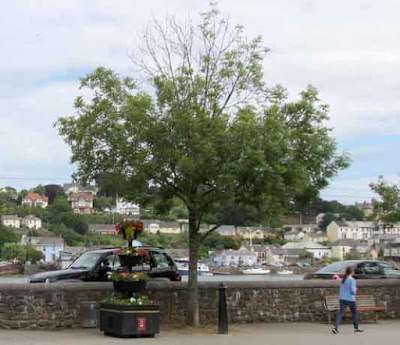Attack on the Tower of London suited my needs perfectly. I've never read any of Roy MacGregor's stories, or for that matter any of the other novels in the Screech Owls series, but Roy's easy reading prose, simple character introductions, and his way of introducing the current story got me instantly involved. I particularly enjoyed meeting Travis, the captain of the children's Ice Hockey team, as the team flew on their Air Canada plane to London.
It seems that sports officials in London are trying to rouse interest in an inline skating hockey championship. To found a league in their own country, they select a team from children in England, then announce an international competition. Any team from another country can be selected, and their trip will be completed paid for. Although the Screech Owls have never formally played hockey on inline skates, they all ride them for fun, and play impromptu inline street-hockey games in their off time. They also know that their coach, who would have gone on to a career in the National Hockey League had he not suffered a debilitating injury, loves English history. So the team members send in several entries, each time stating why (in a slightly different way, and in fifty words or less), they believe they are worthy of being chosen. Who wouldn't fall in love with a bunch of 12 and 13 year old kids who like their coach so much that they want to give him that kind of experience?
Additionally, the competition takes place the week after Halloween, which is the same week my wife and I stayed in London back in 2013.
Much of the critical action in the novel takes place in the Tower of London, which despite having made two visits to that city, I have yet to see. But one location the Screech Owls visit I could relate to, and that is Hyde Park. This large park, with the adjacent Kensington Park, serves as a huge green area in the center of this densely populated urban environment. On our visit in 2013, we walked through the two parks, watching all the leaves changing color on the trees, the meticulously groomed flower beds, the swans and birds swimming on the Serpentine (a river), and all the people out walking, chatting, playing, boating, or riding horses. Naturally, it rained on us, so we ducked into a little restaurant for a cup of tea and a bun, but then the rain went away, and everyone, including us, emerged, and the parks once more filled with people.
Unlike us, the Screech Owls enjoy good weather during their stay in England's capital. The competition organizers set up a rink in Hyde park, and as the Screech Owls arrive, their competition, the Young Lions of Wembley, are already warming up.
It was a lovely day, the sun shining and the light breeze plucking the odd dead leaf from the trees and sending it spinning down. There were so few leaves on the ground, however, that Travis wondered if they had sweepers hiding behind the big trunks waiting for one to land so they could race out and be off with it before anyone noticed. He had never seen such a beautifully kept park.
I agree with you, Travis. Hyde Park (along with Kensington Park), is a beautiful place to be. Even in November, when it's cold out.
 |
| To the memory of Queen Caroline wife of George II for whom the Long Water and the Serpentine were created between 1727 - 1731 |
Although Roy MacGregor wrote Attack on the Tower of London for children, I enjoyed accompanying Travis and his friends on their British adventure. From skimming the titles in the series, it looks like the Screech Owls' adventures take them to interesting places in their native Canada, several states in the U.S., and at least one European country. So, all in all, I don't think I'd object too strongly to reading another book in the series. Or for that matter, any other book in the series. But then, that's the magic of a well told story: it appeals to all children, regardless of sex, race, culture, or age.
Dragon Dave














































